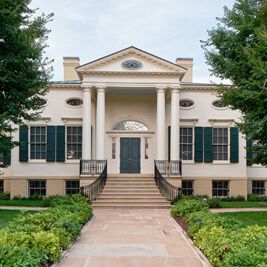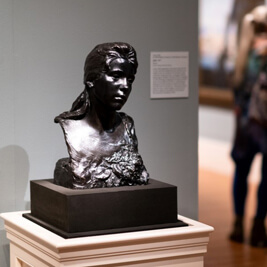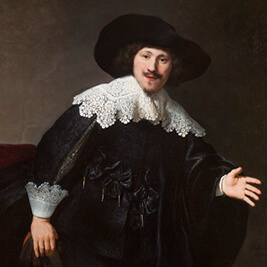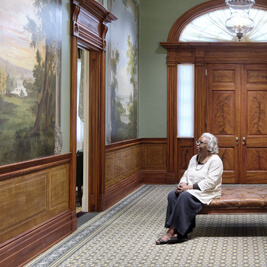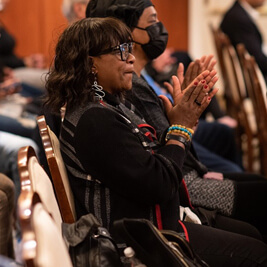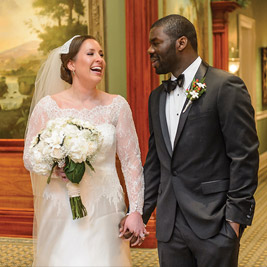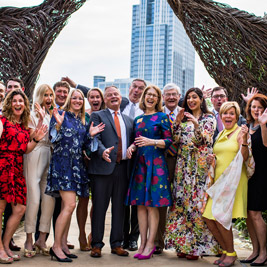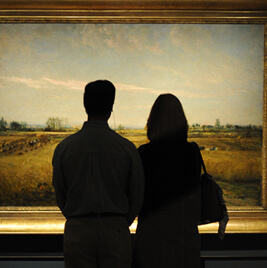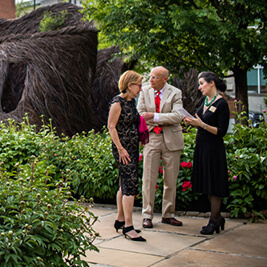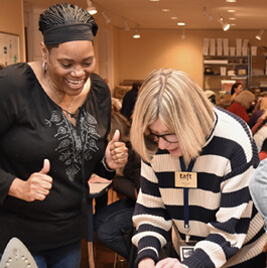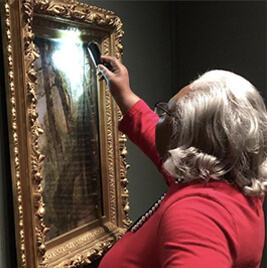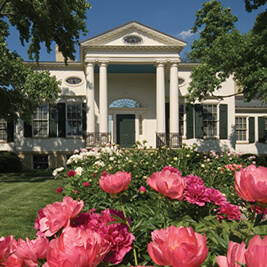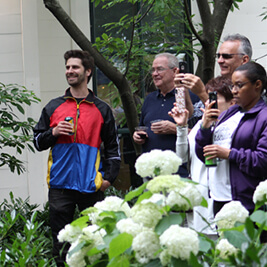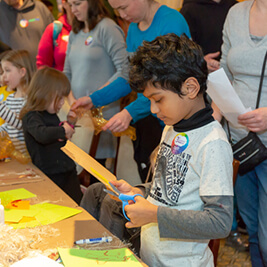- Do + See
- Dine + Host
- Give + Join
- Educate + Learn
Belgian Royalty "Entranced" with Rookwood Pottery and its Connection to the Taft
by Ann Glasscock, Assistant Curator
What do the Taft Museum of Art and Rookwood Pottery have in common? More than you think. The answer to this question involves the granddaughter of Cincinnati’s first commercial winemaker, a collection of Chinese porcelain, and the “Soldier King” and “Red Cross Queen.” Intrigued?
The first connection is simple. Nicholas Longworth (below left), second owner of the house that is now the Taft Museum of Art, was the grandfather of Maria Longworth Nichols Storer (below right), the founder of Rookwood Pottery. Longworth, a lawyer by training, acquired extensive real estate in Cincinnati; his many passions included horticulture and art. Known as the father of American winemaking, Longworth made the nation’s first commercial wines and was a great patron of the arts.
Born into a hardworking and successful family, Storer dreamed of creating and promoting her own art. That dream would become a reality in 1880 when she opened a ceramics company—a radical move at the time for a woman. Japanese design had inspired Storer early in her career, and it captivated her at the 1876 Philadelphia Centennial International Exhibition. Storer’s work began to incorporate Japanese decorative elements and motifs derived from nature, as seen in this vase featured in our current exhibition, A Splendid Century: Cincinnati Art 1820–1920. Here, against a cloud-filled sky, spiders cling to the strands of a web while bats fly peacefully in front of a full moon. The Japanese influence is evident in other pieces in the exhibition as well, including Kataro Shirayamadani’s deep amber glazed vase with a dragon gripping the sides of the vessel and Sara Sax’s work decorated with herons, cherry blossoms, and a snow-capped mountain reminiscent of Japan’s Mount Fuji.
Sax’s vase was part of Rookwood’s new Soft Porcelain line, which they launched after years of experimentation and research into historic Chinese porcelain. I would like to think that individuals like Rookwood’s chemist Stanley Burt studied Chinese porcelains in person, specifically those owned by Charles and Anna Taft, although no proof of this has yet come to light. Indeed, similarities do exist between both the shapes and glazes used by Rookwood when compared to several examples of Chinese porcelain in the Taft’s collection, suggesting a direct influence. For example, John Wareham’s oxblood-glazed vase, with its spherical body and slender neck, recalls the Taft’s Qing dynasty vessel of similar form and color. Ultimately, the Tafts acquired more than 200 ceramic objects, but no pieces of Rookwood pottery made it into their fine art collection.
Anna Taft, however, did visit Rookwood on several occasions. The most noteworthy occurred on October 22, 1919.On that momentous day, King Albert I and Queen Elisabeth of the Belgians arrived in Cincinnati to honor those who had supported Belgium during the recent Great War (below, Anna Sinton Taft (waving) escorts Queen Elisabeth (to her left) up the front walk of the Taft residence). Despite being in town only for one day, and having a very busy schedule, the queen made a special request to visit the ceramics company. On the morning of the 22nd, a welcome party received the sovereigns at Central Union Station. From there, Anna accompanied the queen to Rookwood. They were driven in Levi Addison Ault’s limousine, “the royal equipage of the day.”
The Cincinnati Enquirer described the event with much interest. First, Joseph Gest, president of Rookwood, welcomed the group. Then, the artist John D. Wareham toured them through the various departments. The Belgians were apparently “entranced with the finished examples of this art. . . . and they hung over the cabinets with almost as much eagerness as Her Majesty.” When Wareham told Queen Elisabeth she could choose any model to be thrown upon the potter’s wheel right before her eyes, she was thrilled. Adding to her excitement, Wareham noted that the finished piece would be sent to her in Belgium. The Enquirer described the queen as being “like a child, suddenly told to select one from a series of rare confections.” She “moved eagerly from vase to mantel tile; from bowl to fountain, drawn irresistibly by the beautiful form and color of the display. Finally she selected a tall vase of gracefully Grecian shape, and in color what Mr. Wareham calls ‘nebula’ for its deep dark blue.” Today, Rookwood compares this color to “the vibrant blue-green of a supernova,” which has “an out-of-this-world quality that draws the eye.” When completed, the queen’s striking blue vase was sent through the Belgian Consul in New York by personal messenger to the royal residence in Brussels. One wonders if the vase is still in the royal family’s collection . . .
